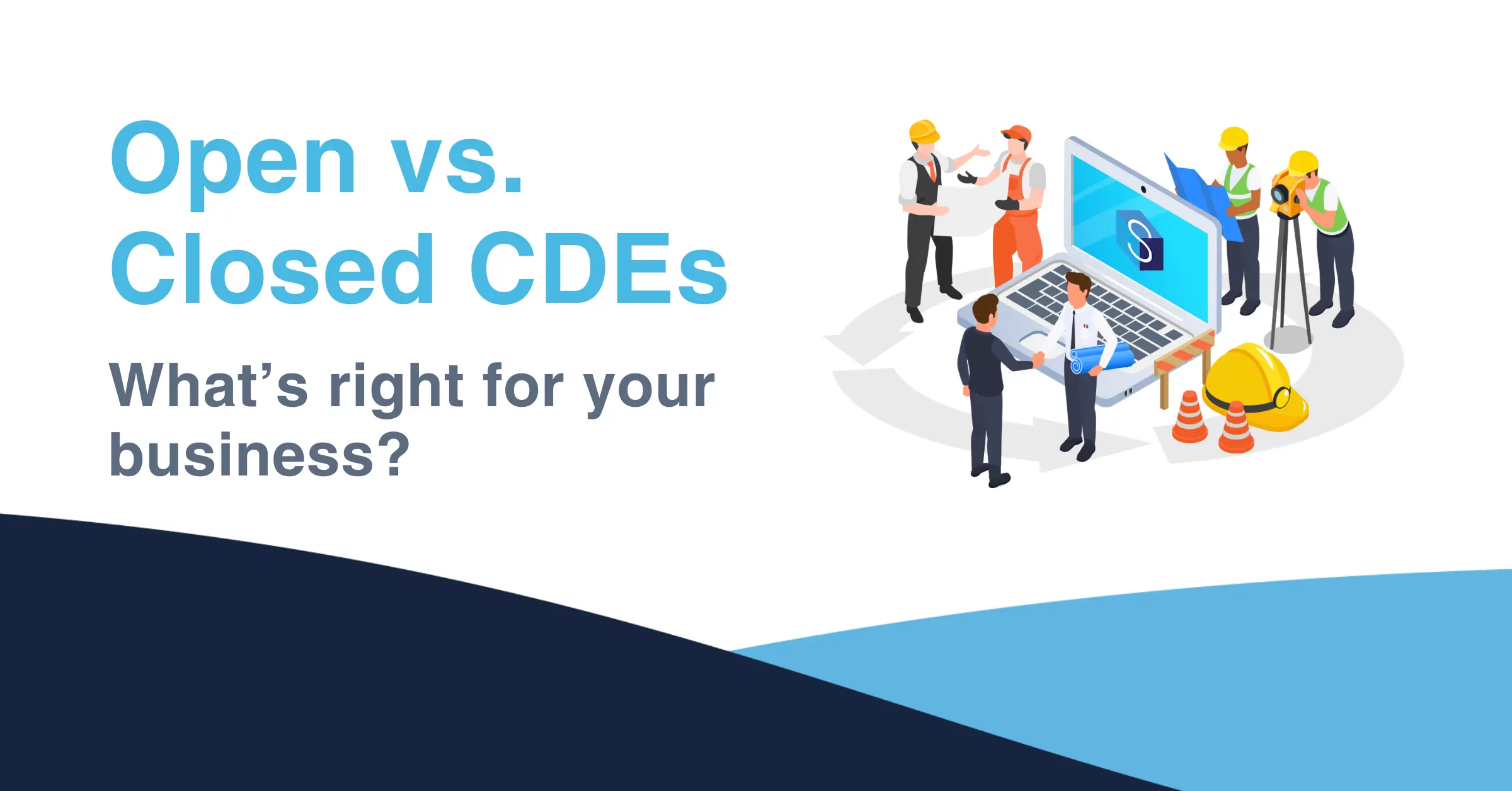Open vs. Closed CDEs: What’s Right for Your AEC Project?

In the architecture, engineering, and construction (AEC) industry, how project data is managed can make or break collaboration, timelines, and compliance. At the centre of this ecosystem is the Common Data Environment (CDE)—a digital platform designed to store, share, and manage project information across its lifecycle.
But as the industry grows in complexity and digitisation, there’s an ongoing shift in how these environments are structured. While closed CDEs have long been the norm, an increasing number of organisations are exploring open or connected CDEs that promote flexibility, interoperability, and future readiness.
So, what’s the real difference between the two models? And which one best fits the evolving demands of AEC projects?
Understanding the Two Models
A closed CDE is typically tied to a single vendor or software suite. It provides a secure and standardised environment for storing and sharing information—usually within an internal team or across a narrowly defined group of collaborators. These systems excel in environments where control, security, and consistency are paramount.
In contrast, an open or connected CDE is designed for flexibility. Built to integrate with a wide range of tools and platforms, open CDEs support open data standards and enable seamless data exchange between stakeholders, even if they’re using different systems.
This distinction is becoming increasingly important. As the UK Centre for Digital Built Britain notes, collaborative data environments need to support interoperability if they’re to deliver the full benefits of digital transformation. (1)
The Case for Closed CDEs
Closed CDEs are often seen as safer and simpler to manage, especially for smaller projects or organisations just beginning their digital journey. With everything built into a single platform, processes and permissions are easier to standardise. These systems often come with pre-defined workflows, built-in compliance features, and dedicated vendor support.
However, this streamlined experience can come at a cost. Integration with external systems may be limited or complex, and organisations may find themselves locked into a specific vendor’s roadmap or pricing model.

Why Open CDEs Are Gaining Traction
Today’s projects are rarely delivered by a single team using a single toolset. Multidisciplinary collaboration, cloud workflows, and federated project teams are now the norm; making interoperability a must-have rather than a nice-to-have.
This is where open CDEs shine. They’re designed to:
- Connect to multiple platforms like BIM tools, GIS systems, scheduling software, and asset management platforms without manual intervention.
- Support open standards like IFC, BCF, and COBie, ensuring consistent data exchange across the project lifecycle.
- Enable automated workflows through Connectors and Data Flows that integrate with engineering and construction software platforms, tools, and CDEs — reducing duplication and manual entry.
The goal? To create a best-in-breed ecosystem where every team can work on the tools they prefer while contributing to a single source of truth.
Making the Comparison
Let’s break down the differences a little further:
| Aspect | Closed CDE | Open CDE |
| Interoperability | Limited to vendor ecosystem | Supports multi-vendor integration |
| Tool Choice | Fixed (vendor-specific) | Flexible (best tools for the job) |
| Data Exchange | Often manual or restricted | Automated, real-time via Data Flows |
| Compliance | Built-in (limited to platform) | Enables ISO 19650 compliance across systems |
| Scalability | Constrained by vendor limits | Grows with project and tech stack |
| Vendor Lock-in | High | Low |
Real-World Impacts
Imagine a major infrastructure project where multiple stakeholders work across different platforms — architects using Autodesk Revit, engineering designers using Civil 3D, and surveyors working with GIS tools — while asset managers rely on systems like Maximo or SAP.
In a closed CDE model, these systems may struggle to talk to each other. Teams often resort to exporting and importing files manually, increasing risk and wasting time.
In an open CDE model, these systems are integrated using secure APIs and automated dataflows. A change to a BIM model triggers updates downstream, impacting schedules, cost estimates, and procurement plans in real time. This kind of live interoperability not only boosts productivity but helps reduce rework and improve data quality for future operations and asset management.
The choice between open and closed CDEs isn’t about which one is better in absolute terms — it’s about what your project needs.
If your team values simplicity, control, and internal consistency, a closed CDE might serve you well. But if you’re operating in a complex, multi-stakeholder environment where flexibility, integration, and futureproofing are priorities, an open CDE could be the smarter investment.
As the AEC industry continues to evolve—embracing digital twins, AI, and connected assets—the ability to exchange data freely and securely across platforms will become non-negotiable. Open CDEs position your business not just to manage data but to harness its full potential.
Ready to learn more about Open CDEs?
Watch our webinar on Connected CDEs and explore how 12d Synergy can help you implement an ecosystem of solutions that work together, helping you save time, money, and increase efficiency.
